After delivery, new moms experience a lot of changes in their body. It is important to choose the right clothing that will provide comfort and support during this time. From hospital stays to homecoming, there are different clothing choices that new moms can make to help them feel comfortable and confident.
Understanding Postpartum Body Changes Postpartum body changes can be overwhelming for new moms. It is important to understand the changes that the body goes through during this time. This knowledge will help new moms choose what to wear after delivery for comfort and support.
Comfortable Clothing Choices After Delivery Comfortable clothing choices are important after delivery. New moms should choose clothing that is loose-fitting, soft, and breathable. Clothing that is easy to put on and take off will also be helpful.
Key Takeaways
- Understanding postpartum body changes is important for new moms to choose the right clothing.
- Comfortable clothing choices after delivery should be loose-fitting, soft, and breathable.
- Clothing for breastfeeding moms should be easy to put on and take off.
Understanding Postpartum Body Changes
After giving birth, a woman’s body goes through a lot of changes. It is important to understand these changes to know what to expect and how to take care of your body during this time.
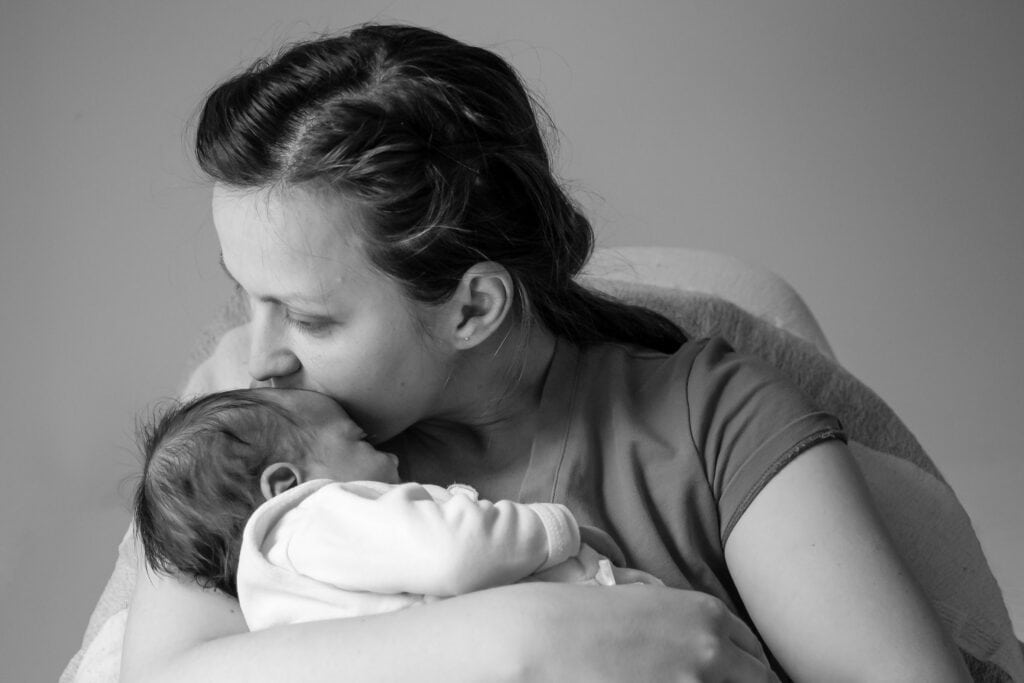
1. Postpartum Body
The postpartum body may feel very different from the pre-pregnancy body. The uterus, which has expanded to accommodate the growing baby, will take some time to shrink back to its original size. This can cause discomfort and cramping. Additionally, the pelvic floor muscles may be weakened, which can lead to urinary incontinence.
2. Skin Changes
Pregnancy can cause changes in the skin, such as stretch marks and hyperpigmentation. These changes may fade over time but will not disappear completely. It is important to keep the skin moisturized to help prevent dryness and itching.
3. Stretch Marks
Stretch marks are a common occurrence during pregnancy. They occur when the skin is stretched too quickly and can appear on the belly, thighs, and breasts. While there is no guaranteed way to prevent stretch marks, keeping the skin moisturized and maintaining a healthy weight can help reduce their appearance.
4. Engorgement
Engorgement occurs when the breasts become full of milk after childbirth. This can cause discomfort and even pain. It is important to breastfeed or pump regularly to relieve the pressure and prevent complications such as mastitis.
5. Breast Milk
Breast milk is the best source of nutrition for a newborn baby. It provides all the necessary nutrients and antibodies to help the baby grow and develop. It is important to maintain a healthy diet and stay hydrated to ensure a good supply of breast milk.
Overall, understanding postpartum body changes is important for new mothers to know what to expect and how to take care of themselves during this time.
Comfortable Clothing Choices After Delivery
After giving birth, comfort is key when it comes to clothing choices. New moms need to be able to move around easily and feel comfortable in their clothes. Here are some comfortable clothing choices to consider after delivery:
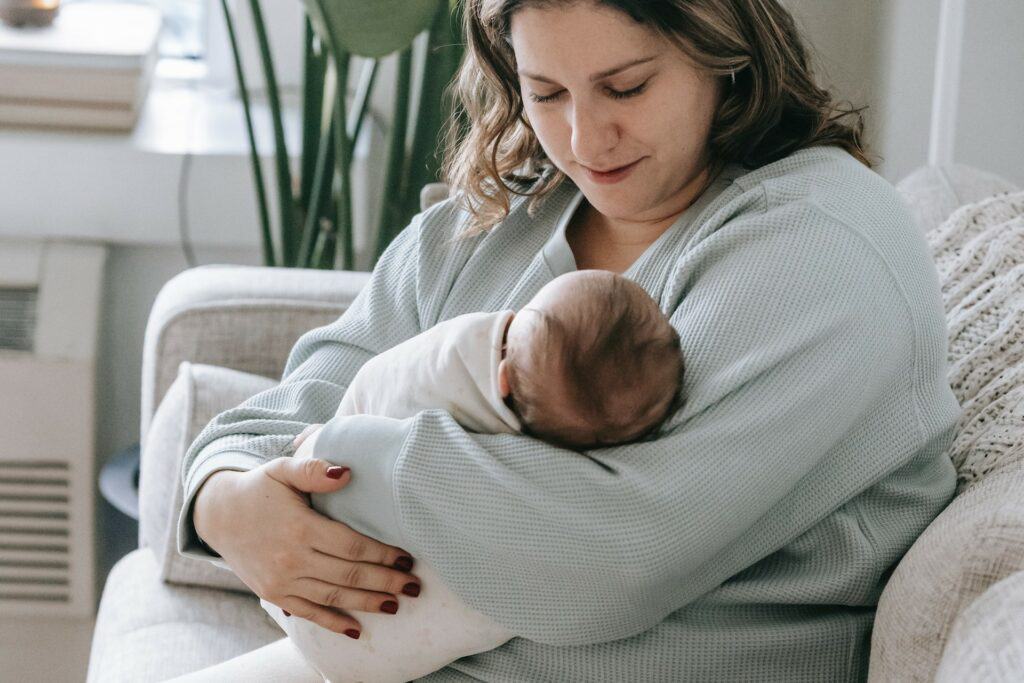
1. Pants and Leggings
Pants and leggings with a stretchy waistband are a great option for new moms. They provide comfort and support for the postpartum belly. Yoga pants and leggings are also a good choice as they are comfortable and easy to move around in.
2. Robes and Tops
Robes and tops that are loose-fitting and made from soft, breathable fabric can be a great option for new moms. They are comfortable and easy to wear, and can be easily paired with leggings or pants.
3. Pajamas and Nightgowns
Pajamas and nightgowns that are designed for nursing can be a great option for new moms. They provide easy access for nursing, and are often made from soft, comfortable fabric.
4. Nursing Bras and Tops
Nursing bras and tops are a must-have for new moms who are breastfeeding. They provide easy access for nursing, and can be worn under any outfit.
5. Maternity Clothes
Maternity clothes can still be worn after delivery, especially if they are loose-fitting and made from comfortable fabric. Maternity pants and leggings with a stretchy waistband are a great option for postpartum wear.
6. Lounge Wear
Lounge wear, such as sweatpants and hoodies, can be a comfortable option for new moms who are spending a lot of time at home. They provide comfort and warmth, and are easy to move around in.
7. Socks
Socks are a small but important part of postpartum clothing. New moms should wear socks that are warm and comfortable, especially if they are spending a lot of time sitting or lying down.
8. Postpartum Clothes
Postpartum clothes are specifically designed for new moms who are recovering from childbirth. They provide support for the postpartum belly, and are often made from soft, breathable fabric.
Overall, new moms should choose clothing that is comfortable, easy to wear, and provides support where needed. With these comfortable clothing choices, new moms can focus on bonding with their new baby and recovering from childbirth.
Clothing for Breastfeeding Moms
After delivery, new moms need comfortable and practical clothing that allows them to breastfeed their babies easily. Here are some tips on what to wear while breastfeeding:
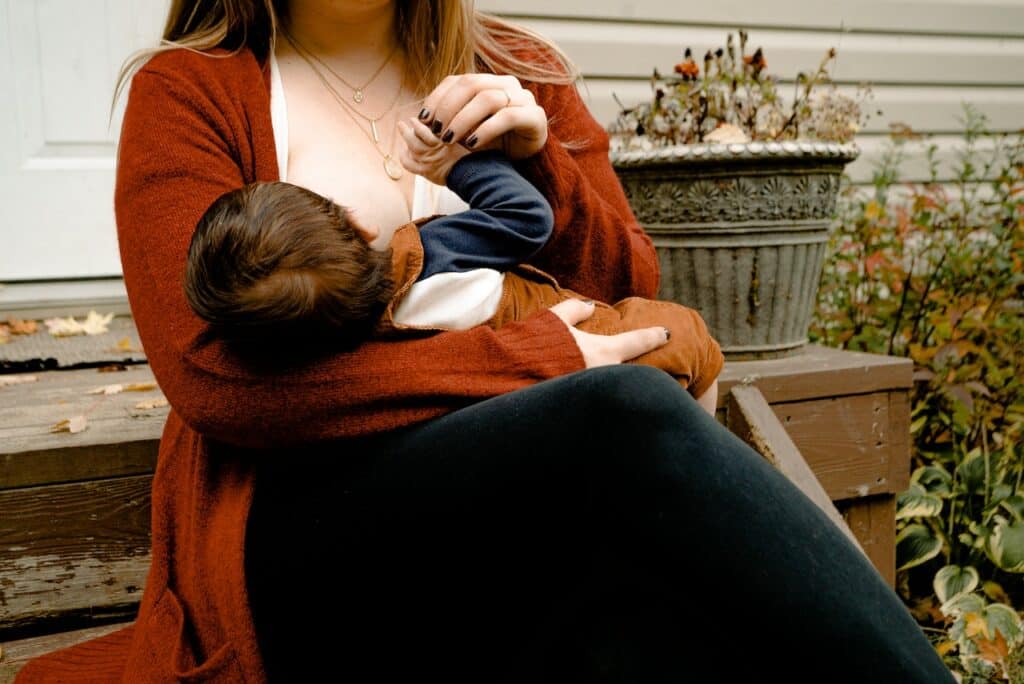
Nursing Bras
A nursing bra is a must-have for breastfeeding moms. It provides support and makes breastfeeding easier. Nursing bras have clips or snaps that allow you to open and close the cups easily. They come in different styles, including wireless, underwire, and sports bras. Choose a nursing bra that fits well and provides enough support.
Nursing Tanks
Nursing tanks are another essential item for breastfeeding moms. They are comfortable, practical, and easy to wear. Nursing tanks have a built-in bra and clips that allow you to breastfeed your baby easily. They are perfect for layering and can be worn under other clothing.
Nursing Pads
Breastfeeding can cause leakage, especially in the early days. Nursing pads are an essential item for preventing leaks and keeping your clothing dry. They come in disposable and reusable options and can be worn inside your bra.
Loose-fitting Clothing
Loose-fitting clothing is ideal for breastfeeding moms. It allows you to breastfeed your baby easily and comfortably. Choose clothing that is easy to open and close, such as button-down shirts, wrap dresses, and zip-up hoodies. Avoid clothing that is tight or restrictive.
Comfortable Pants
Comfortable pants are a must-have for new moms. Choose pants that are stretchy and comfortable, such as yoga pants, leggings, or sweatpants. They will allow you to move around easily and comfortably while breastfeeding.
In summary, breastfeeding moms need comfortable and practical clothing that allows them to breastfeed their babies easily. Nursing bras, nursing tanks, nursing pads, loose-fitting clothing, and comfortable pants are all essential items for new moms.
Clothing for Hospital Stay and Homecoming
When it comes to clothing for the hospital stay and homecoming after delivery, comfort and practicality are key. Here are some tips and ideas for what to wear during this time:
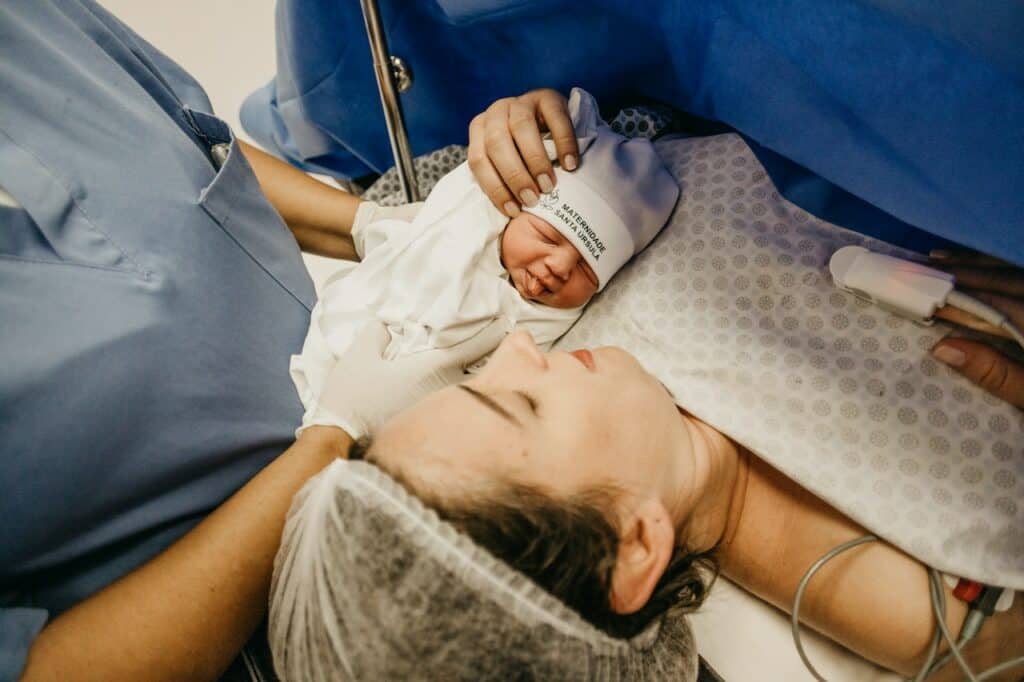
Hospital Stay
During the hospital stay, most women wear the hospital gown provided by the hospital. However, some women prefer to bring their own gown or comfortable clothing. Here are some options to consider:
- Loose-fitting, comfortable pajamas or loungewear
- Nursing-friendly nightgowns or tops
- Robes or cardigans for layering
- Slippers or comfortable shoes for walking around the hospital
It’s also important to pack a few essentials in your hospital bag, such as nursing bras, underwear, and socks. Many hospitals provide mesh underwear and pads, but some women prefer to bring their own.
Homecoming
When it’s time to go home, you’ll want to wear something comfortable and easy to nurse in. Here are some ideas:
- Loose-fitting, comfortable clothing that allows for easy nursing access
- Nursing-friendly dresses or tops
- High-waisted leggings or yoga pants with a nursing tank or top
- Cardigans or jackets for layering
It’s important to remember that your body will be recovering after delivery, so you’ll want to avoid tight or restrictive clothing. Opt for breathable, soft fabrics that won’t irritate your healing skin.
Overall, the key to choosing clothing for the hospital stay and homecoming is to prioritize comfort and practicality. Pack a few essentials in your hospital bag and choose clothing that makes nursing and recovery as easy as possible.
Postpartum Underwear and Support Garments
After delivery, a woman’s body goes through a lot of changes, and it is essential to wear comfortable and supportive garments to aid in the recovery process. Here are some things to consider when choosing postpartum underwear and support garments:

Underwear
Postpartum underwear is designed to provide comfort and support to a woman’s body after delivery. These garments are made of soft, breathable, and stretchy fabric that accommodates the changing shape of the body. Here are some types of postpartum underwear to consider:
- Disposable mesh underwear: These are provided by hospitals and are designed to be worn for a few days after delivery. They are made of lightweight material and provide good airflow to the body.
- High-waisted underwear: These provide full coverage and support to the abdominal area. They are usually made of soft and stretchy fabric and come in various sizes.
- Seamless underwear: These are designed to avoid irritation and discomfort. They have no seams and are made of soft, breathable material that provides maximum comfort.
Supportive Bra
A supportive bra is essential after delivery, especially if a woman is breastfeeding. It provides comfort and support to the breasts, which can become sore and swollen during this time. Here are some types of supportive bras to consider:
- Nursing bras: These are designed to provide easy access to the breasts for breastfeeding. They have adjustable straps and come in various sizes.
- Sports bras: These provide extra support to the breasts and are made of breathable material that wicks away moisture.
- Comfort bras: These are designed for maximum comfort and support. They have no underwire and are made of soft, stretchy material.
Support Garments
Support garments are designed to provide support and compression to the abdominal area after delivery. They aid in the recovery process by reducing swelling and providing support to the abdominal muscles. Here are some types of support garments to consider:
- Belly bands: These are designed to provide compression to the abdominal area. They are made of soft, stretchy material and come in various sizes.
- Postpartum girdles: These provide full coverage and support to the abdominal area. They are usually made of soft and breathable material and are designed to be worn for a few weeks after delivery.
- Compression shorts: These provide support to the abdominal and pelvic area. They are usually made of breathable material and come in various sizes.
Overall, it is essential to choose postpartum underwear and support garments that provide comfort and support to a woman’s body after delivery. It is also important to consult with a healthcare professional before choosing any postpartum garment.
Postpartum Care and Recovery Essentials
After delivery, the body needs time to recover and heal. Here are some essential items and tips to help with postpartum care and recovery:
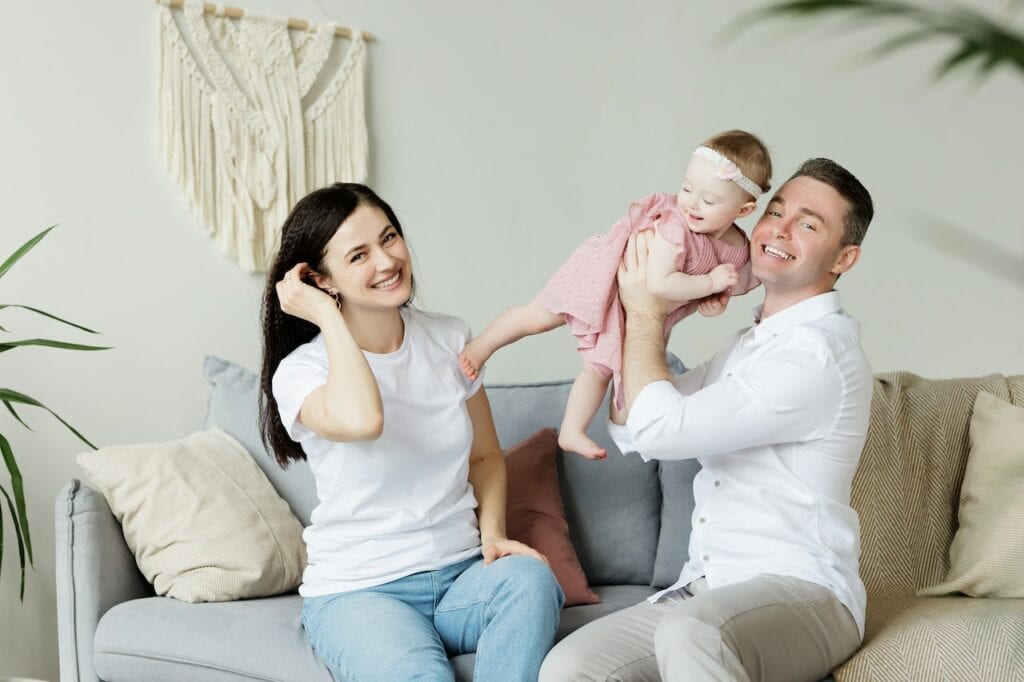
Pain Relief
It is common to experience pain and discomfort after delivery. Pain relievers, such as acetaminophen or ibuprofen, can help manage pain. It is important to consult with a healthcare provider before taking any medication.
Perineal Care
The perineum, the area between the vagina and anus, can be sore and swollen after delivery. Using warm water to clean the area and taking sitz baths can provide relief. Applying ice packs or witch hazel pads to the area can also help reduce swelling and discomfort.
Stool Softeners
Constipation is a common postpartum issue. Stool softeners can help ease bowel movements and prevent straining, which can be painful for the perineum.
Pelvic Floor Exercises
Pelvic floor exercises, also known as Kegels, can help strengthen the muscles that support the bladder, uterus, and rectum. These exercises can help prevent urinary incontinence and improve sexual function.
Rest and Sleep
Rest and sleep are crucial for postpartum recovery. It is important to prioritize rest and ask for help from family and friends when needed. A comfortable pillow can also help provide support and comfort during sleep.
Infection Prevention
After delivery, the body is more susceptible to infection. It is important to keep the perineum clean and dry, and to avoid using tampons or douches. Signs of infection include fever, tenderness, and discharge with a foul odor.
Nutrition
Eating a healthy diet with plenty of fiber can help prevent constipation and promote healing. Drinking plenty of water is also important for hydration and milk production if breastfeeding.
Overall, taking care of oneself after delivery is crucial for a healthy recovery. It is important to consult with a healthcare provider for personalized postpartum care and guidance.
Mental Health After Delivery
After giving birth, a new mother may experience a range of emotions, and it is essential to prioritize mental health during this time. Here are some common mental health issues that new mothers may encounter:
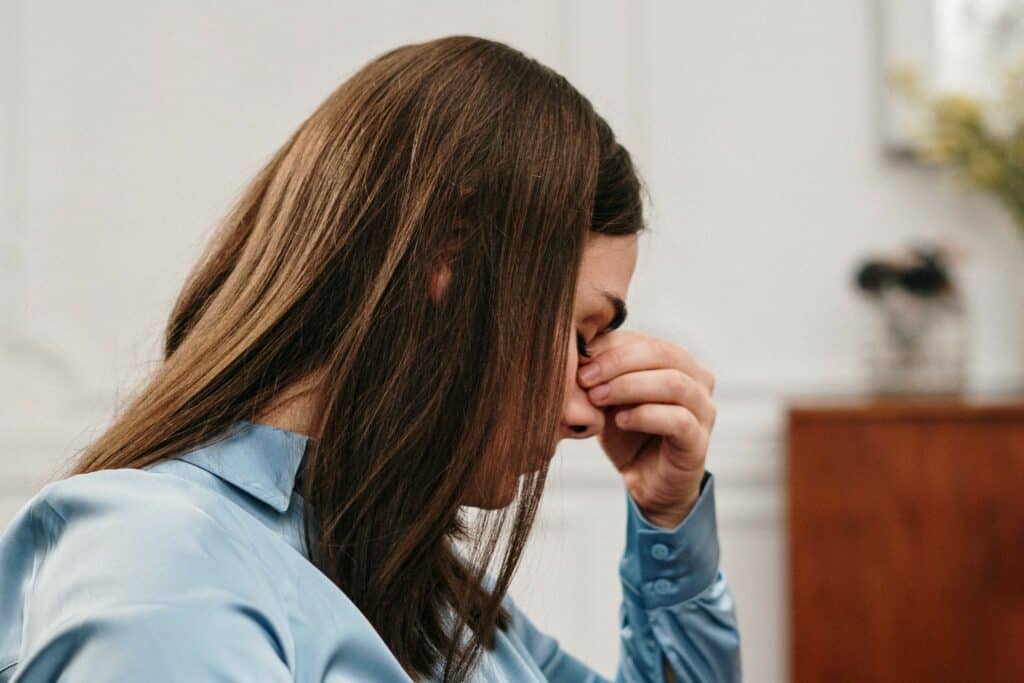
1. Baby Blues
Baby blues is a common condition that affects up to 80% of new mothers. It is characterized by mood swings, tearfulness, and anxiety. These symptoms usually start around three to five days after delivery and can last up to two weeks. Baby blues often go away on their own, but it is essential to talk to a healthcare provider if the symptoms persist or worsen.
2. Depression
Depression is a severe mental health condition that affects many new mothers. It is characterized by sadness, loss of interest, and feelings of worthlessness. Depression can occur at any time during the first year after delivery. It is essential to talk to a healthcare provider if the symptoms persist or worsen.
3. Anxiety
Anxiety is a common mental health issue that affects many new mothers. It is characterized by excessive worry and fear. Anxiety can occur at any time during the first year after delivery. It is essential to talk to a healthcare provider if the symptoms persist or worsen.
4. Postpartum Depression
Postpartum depression is a severe mental health condition that affects about 10-20% of new mothers. It is characterized by feelings of sadness, hopelessness, and worthlessness. Postpartum depression can occur at any time during the first year after delivery. It is essential to talk to a healthcare provider if the symptoms persist or worsen.
In summary, mental health is crucial for new mothers after delivery. It is essential to talk to a healthcare provider if any symptoms of baby blues, depression, anxiety, or postpartum depression persist or worsen.
Additional Tips for Postpartum Comfort
After giving birth, it is important to prioritize your comfort while you recover. Here are some additional tips to help you feel more comfortable during the postpartum period:
- Wear loose, comfortable clothing: Opt for loose-fitting clothes that won’t irritate any stitches or wounds. Soft, breathable fabrics like cotton or bamboo are great choices. Avoid anything tight or restrictive that may cause discomfort.
- Invest in comfortable shoes: Your feet may be swollen after delivery, so it’s important to have comfortable shoes that fit well. Look for shoes with good arch support and cushioning.
- Look for pockets: Pockets can be a lifesaver during the postpartum period. They provide a convenient place to store essentials like your phone, keys, and snacks, so you don’t have to carry a bag around with you.
- Wear slippers: Slippers are a great option for postpartum recovery because they are easy to slip on and off, and provide a cozy, comfortable fit. Look for slippers with a non-slip sole to prevent slips and falls.
- Take care of stitches and soreness: If you have stitches or are experiencing soreness, be sure to follow your doctor’s instructions for care. This may include using a sitz bath, applying ice packs, or using numbing sprays or creams.
- Use a headband or hair tie: If you have long hair, consider using a headband or hair tie to keep it out of your face during recovery. This can help you feel more comfortable and prevent hair from getting in the way during feedings or diaper changes.
- Address any discomfort: If you are experiencing discomfort during the postpartum period, don’t hesitate to talk to your healthcare provider. They can offer advice and treatment options to help you feel more comfortable and recover more quickly.
Postpartum Essentials for Personal Hygiene
After delivery, a woman’s body goes through a lot of changes. One of the most significant changes is the discharge of blood and other fluids from the uterus. This discharge, also known as lochia, can last for several weeks, and it is essential to have the right postpartum essentials for personal hygiene.
Sanitary Pads
Sanitary pads are a must-have postpartum essential. These pads are specially designed to handle the heavy bleeding and discharge that comes after delivery. It is recommended to use maternity pads, which are longer and thicker than regular pads, to provide more protection and absorbency.
Kegel Exercises
Kegel exercises are another essential postpartum activity. These exercises help to strengthen the pelvic floor muscles, which can become weakened during pregnancy and delivery. Kegel exercises can also help to improve bladder control and prevent incontinence.
Episiotomy Care
If a woman has an episiotomy, which is a surgical cut made to the perineum to enlarge the vaginal opening during delivery, it is essential to take care of the area properly. The area should be kept clean and dry, and ice packs can be used to reduce swelling and pain.
Water
Drinking plenty of water is another essential postpartum activity. It is important to stay hydrated, especially if a woman is breastfeeding. Drinking water can also help to flush out any toxins in the body and promote healing.
Vaginal Discharge
In addition to bleeding, women may also experience vaginal discharge after delivery. This discharge is typically yellow or white and may have a mild odor. It is important to keep the area clean and dry, and to avoid using any scented products or douches, which can disrupt the natural balance of bacteria in the vagina.
In summary, having the right postpartum essentials for personal hygiene is crucial for a woman’s health and well-being after delivery. By using sanitary pads, doing kegel exercises, taking care of episiotomy wounds, drinking plenty of water, and managing vaginal discharge, women can promote healing and recovery.
Looking Good Post-Delivery
After giving birth, many new moms struggle with what to wear. They may feel self-conscious about their postpartum body or simply unsure of what will be comfortable. However, it’s important to remember that looking good can help boost confidence and mood during this transition period.

One option is to invest in some comfortable yet stylish loungewear. ASOS has a great selection of loungewear that is both comfortable and fashionable. Look for pieces that are loose-fitting and made from soft, breathable fabrics like cotton or bamboo. This will help keep you comfortable while also allowing you to feel put-together.
Another option is to invest in some postpartum shapewear. While it’s important to embrace your post-baby body, shapewear can help smooth out any lumps and bumps and make you feel more confident in your clothes. Look for pieces that are specifically designed for postpartum wear and made from breathable fabrics.
When it comes to tops, opt for pieces that are loose-fitting and flowy. This will help camouflage any areas you may feel self-conscious about while also keeping you comfortable. Look for tops with interesting details like ruffles or embroidery to add some visual interest.
Finally, don’t forget about accessories. A statement necklace or pair of earrings can help draw attention away from any areas you may feel self-conscious about and add some personality to your outfit.
Overall, the key to looking good post-delivery is to focus on pieces that are comfortable, stylish, and make you feel confident. With a little bit of effort, you can feel great about your post-baby body and enjoy this special time with your new bundle of joy.
Related posts:
Frequently Asked Questions
What are some comfortable clothing options for postpartum recovery?
Comfort is key when it comes to postpartum recovery. Loose-fitting clothing made from soft, breathable fabrics like cotton or bamboo can help prevent irritation and provide comfort. Nursing tops and bras can also be helpful for breastfeeding mothers.
What are some tips for choosing postpartum clothing?
When choosing postpartum clothing, it’s important to consider comfort, practicality, and versatility. Look for pieces that can easily be mixed and matched, and that can accommodate your changing body size. Dark colors and patterns can also help hide any leaks or stains.
What should I consider when choosing clothes to wear after a c-section?
After a c-section, it’s important to choose clothing that won’t rub against your incision site. High-waisted leggings or pants can be uncomfortable, so opt for low-rise or adjustable waistbands. Loose-fitting dresses or tops can also be a good option.
How can I dress comfortably while still feeling confident postpartum?
Postpartum body changes can be difficult to adjust to, but it’s important to remember that they are normal and temporary. Choose clothing that makes you feel comfortable and confident, whether that’s a flowy dress or your favorite pair of jeans. Accessorize with jewelry or scarves to add some personality to your outfit.
What are some clothing items that can help with postpartum healing?
Compression garments, like postpartum belly bands or leggings, can help support your abdominal muscles and reduce swelling. Nursing bras with removable pads can also be helpful for sore breasts.
Are there any clothing materials or styles that I should avoid after giving birth?
Avoid tight-fitting clothing or fabrics that don’t breathe, like synthetic materials. High-waisted pants or waistbands can also be uncomfortable, especially after a c-section. Stick to loose-fitting, breathable fabrics for optimal comfort.
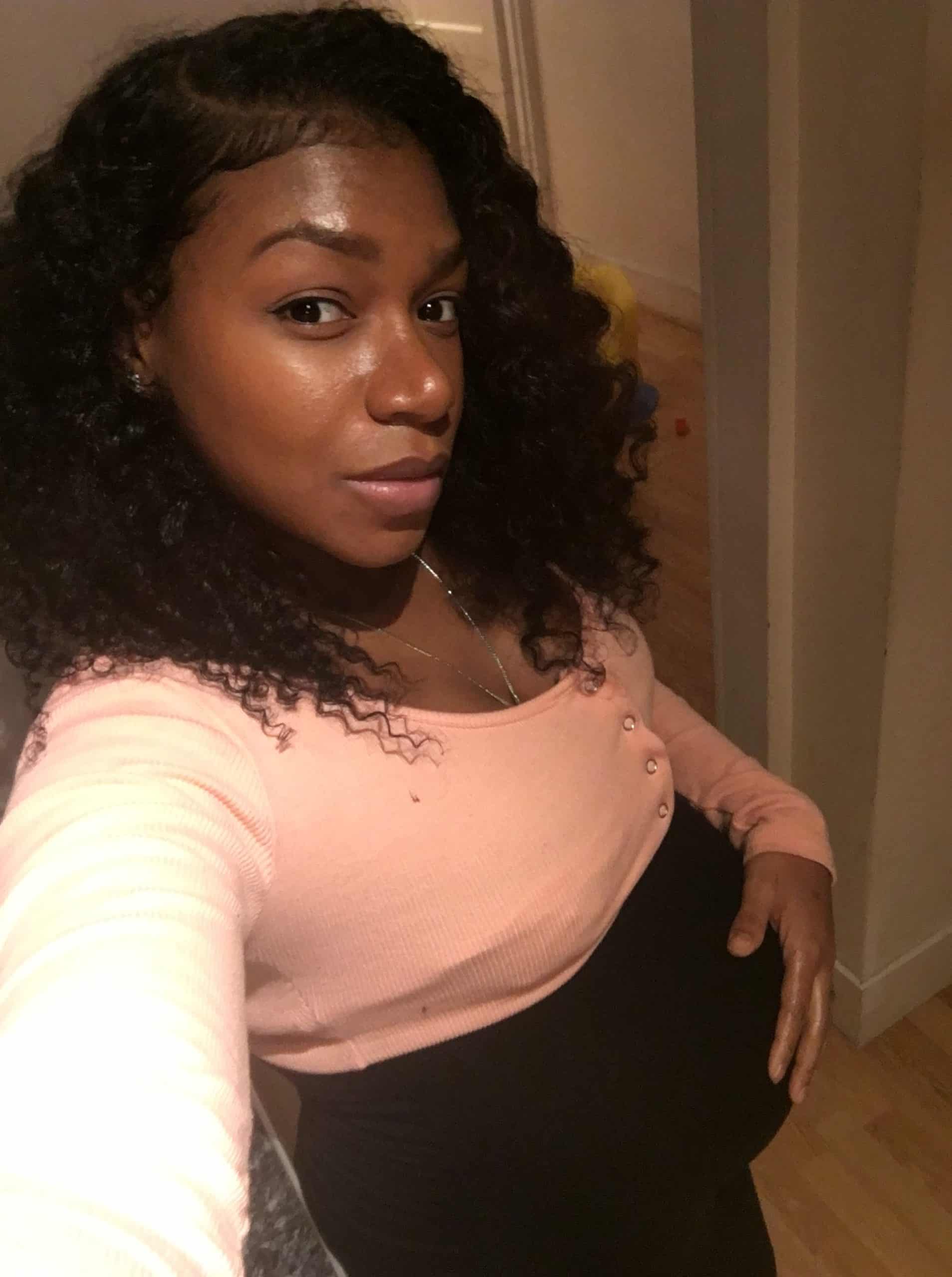
Iesha is a loving mother of 2 beautiful children. She’s an active parent who enjoys indoor and outdoor adventures with her family. Her mission is to share practical and realistic parenting advice to help the parenting community becoming stronger.
